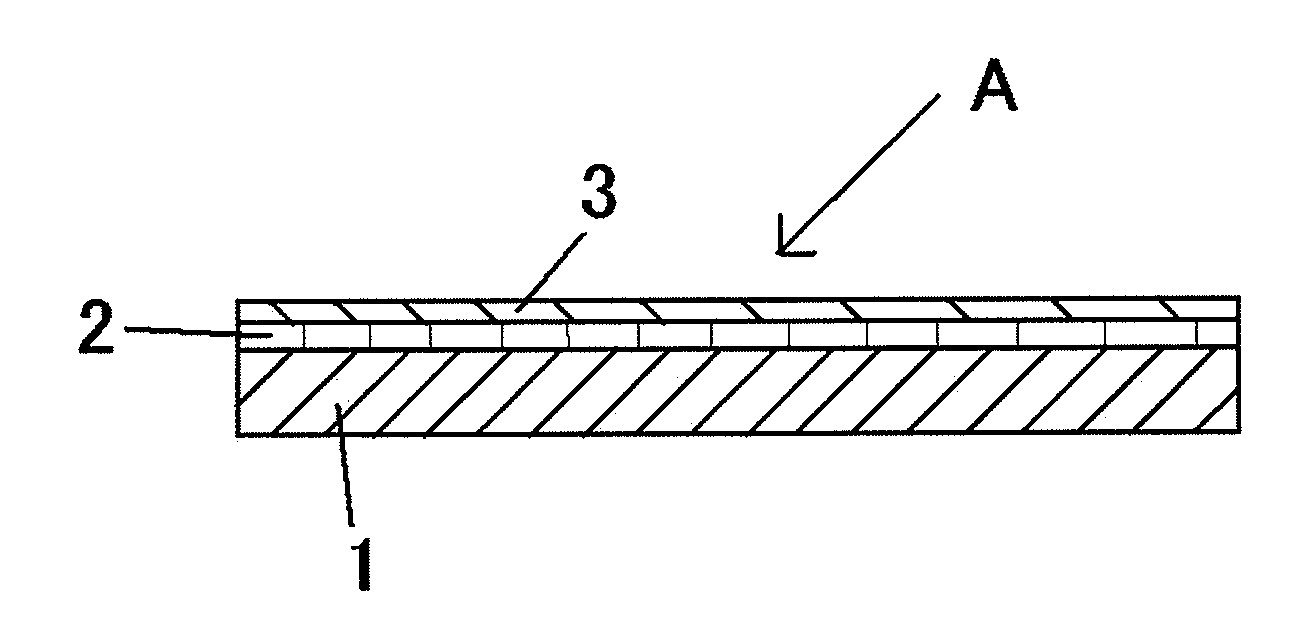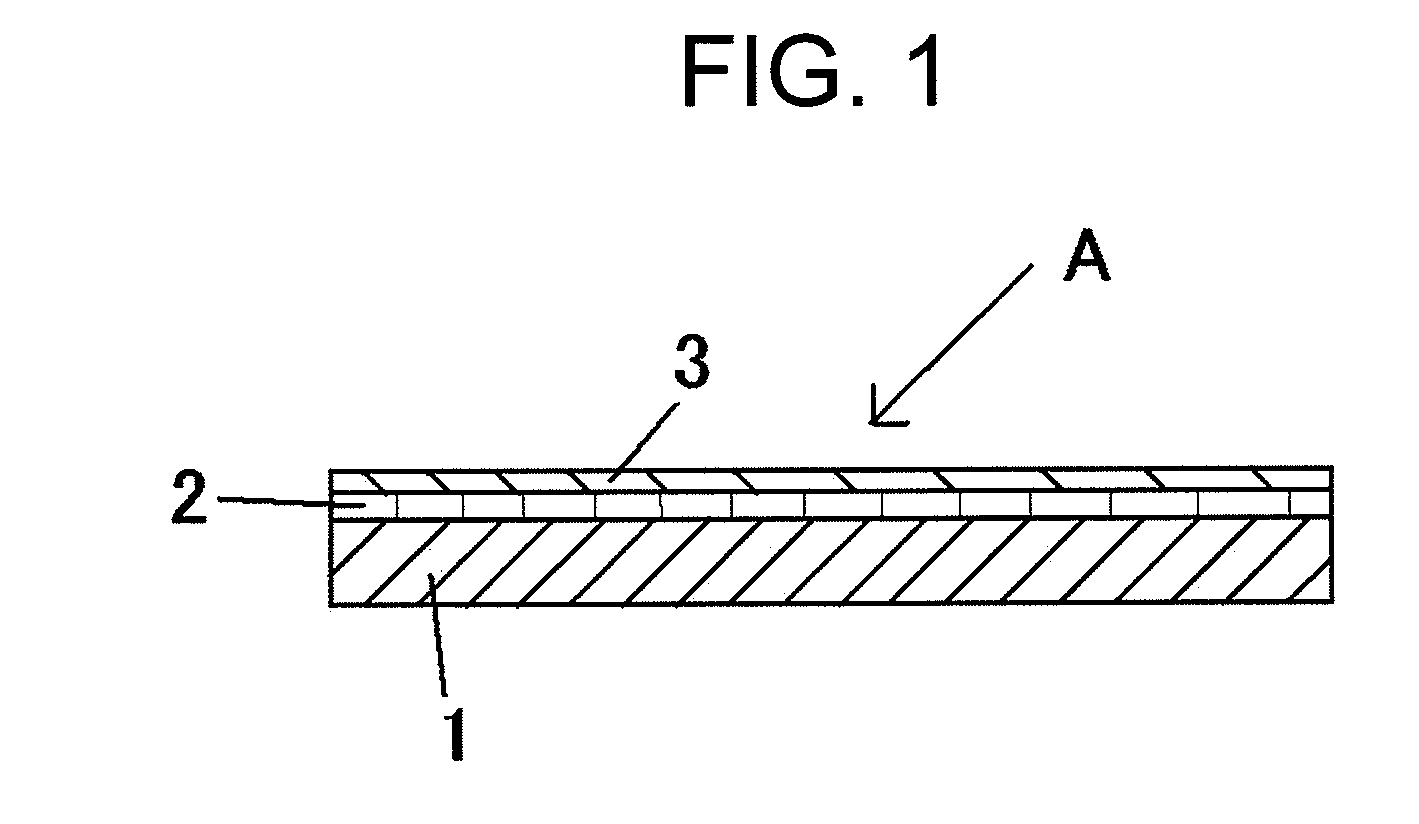Tackiness adhesive sheet for thin-film substrate fixing
- Summary
- Abstract
- Description
- Claims
- Application Information
AI Technical Summary
Benefits of technology
Problems solved by technology
Method used
Image
Examples
example 1
[0145]The tackiness agent layer A and the adhesive agent layer C were affixed on both surfaces of a porous base material of polytetrafluoroethylene (PTFE) having thickness of 150 μm such that the porous base material and the tackiness adhesive agent layers are in contact with each other under a condition of temperature of 90° C. to form a double-sided adhesive sheet including a base material having bore holes. The tackiness agent layer A and the adhesive agent layer C were respectively formed as thin-film substrate and hard substrate affixing surfaces.
example 2
[0146]After a tackiness agent layer surface of the tackiness agent layer B was affixed to the polyimide porous base material A at 90° C., a process film in contact with the porous base material was removed. The adhesive agent layer D was affixed to the surface in the same manner at 90° C. such that the adhesive agent layer D and the surface are in contact with each other to form a double-sided adhesive sheet. The tackiness agent layer B and the adhesive layer D were respectively formed as thin-film substrate and hard substrate affixing surfaces.
example 3
[0147]The tackiness agent layers A and B were affixed to a base material of Kapton 150EN manufactured by Du Toray Industries, Inc. (thickness: 37.5 μm) at 60° C. to obtain a double-sided pressure-sensitive adhesive sheet. The sheet was worked using a precision film punching machine RFP-S20 (manufactured by UHT Corporation) to form a circular hole of 0.2 mm2 to pierce from the upper surface to the lower surface to form a double-sided adhesive sheet having a through-hole in the same portion of the tackiness agent layer and the base material. The tackiness agent layer A and the tackiness agent layer B were respectively formed as thin-film substrate and hard substrate affixing surfaces.
PUM
 Login to View More
Login to View More Abstract
Description
Claims
Application Information
 Login to View More
Login to View More - Generate Ideas
- Intellectual Property
- Life Sciences
- Materials
- Tech Scout
- Unparalleled Data Quality
- Higher Quality Content
- 60% Fewer Hallucinations
Browse by: Latest US Patents, China's latest patents, Technical Efficacy Thesaurus, Application Domain, Technology Topic, Popular Technical Reports.
© 2025 PatSnap. All rights reserved.Legal|Privacy policy|Modern Slavery Act Transparency Statement|Sitemap|About US| Contact US: help@patsnap.com



